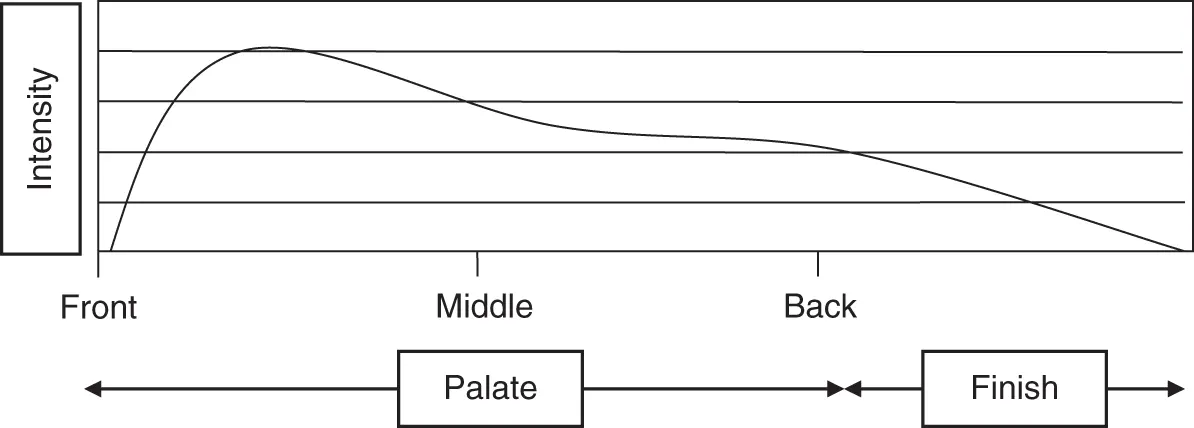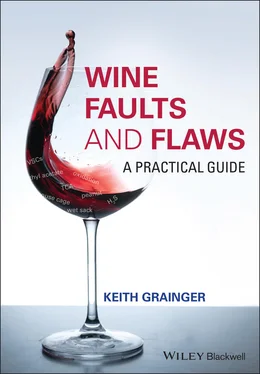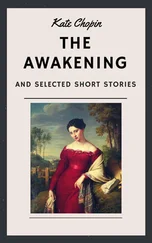Keith Grainger - Wine Faults and Flaws
Здесь есть возможность читать онлайн «Keith Grainger - Wine Faults and Flaws» — ознакомительный отрывок электронной книги совершенно бесплатно, а после прочтения отрывка купить полную версию. В некоторых случаях можно слушать аудио, скачать через торрент в формате fb2 и присутствует краткое содержание. Жанр: unrecognised, на английском языке. Описание произведения, (предисловие) а так же отзывы посетителей доступны на портале библиотеки ЛибКат.
- Название:Wine Faults and Flaws
- Автор:
- Жанр:
- Год:неизвестен
- ISBN:нет данных
- Рейтинг книги:4 / 5. Голосов: 1
-
Избранное:Добавить в избранное
- Отзывы:
-
Ваша оценка:
- 80
- 1
- 2
- 3
- 4
- 5
Wine Faults and Flaws: краткое содержание, описание и аннотация
Предлагаем к чтению аннотацию, описание, краткое содержание или предисловие (зависит от того, что написал сам автор книги «Wine Faults and Flaws»). Если вы не нашли необходимую информацию о книге — напишите в комментариях, мы постараемся отыскать её.
FLAWS
Wine Faults and Flaws: A Practical Guide
An essential guide to the faults and flaws that can affect wine
Wine Faults and Flaws — читать онлайн ознакомительный отрывок
Ниже представлен текст книги, разбитый по страницам. Система сохранения места последней прочитанной страницы, позволяет с удобством читать онлайн бесплатно книгу «Wine Faults and Flaws», без необходимости каждый раз заново искать на чём Вы остановились. Поставьте закладку, и сможете в любой момент перейти на страницу, на которой закончили чтение.
Интервал:
Закладка:
Faulty: showing one or more faults, at a level that makes the wine unpalatable;
Poor: a wine that is, and will always be, unbalanced and poorly structured. A wine with light intensity, very simple one‐dimensional fruit flavours, maybe some flaws, and short finish;
Acceptable: straightforward wine with simple fruit, of medium intensity, somewhat lacking in complexity, with a medium finish;
Good: an absence of faults or flaws, well‐balanced, medium or pronounced intensity and with a smooth texture, complexity, layers of flavours, and development on palate, fairly long or long finish;
Very good: a complex wine, concentrated fruit, very good structure, well‐balanced, long length of finish;
Outstanding: intense fruit, and or tertiary flavours, perfect balance, very expressive and complex, classic typicity of its origin and very long length of finish.
A wine of very good or outstanding quality will present the taster with an unbroken ‘line’, i.e. a continuity from the sensations of attack, when the wine first enters the mouth, through the mid‐palate and on to the finish. It will develop and change in the glass and gain complexity. In other words, it will not say all it has to say within a few seconds of the initial nose and taste. An outstanding wine will also exude a clear, definable, and individual personality, true to its origin, making a confident statement of time and place. It will excite in a way that seems to go beyond the organoleptic sensations. In other words, it will have the ability to move the taster in a similar way to a work of literature, art, or music.
The ‘line’ of a wine, as detailed above, may be depicted visually in the form of a palate profile. This is a graph that illustrates the intensity and the texture of a wine from the attack (front‐palate) through to the mid‐palate, to the back‐palate and to the finish. An example of a palate profile is shown in Figure 2.5.

Figure 2.5 Palate profile.
It will be noted that a criterion for a wine to be assessed as good, very good, or outstanding quality is the absence of any fault or flaw. As previously discussed, this can be a contentious issue. There are technical faults which, at low levels, and dependent upon their relationship with the multiflorous compounds giving aromas, tastes, structure, and texture to a wine may be acceptable or even add complexity and an extra quality dimension.
2.9 Assessment of Readiness for Drinking/Potential for Ageing
2.9.1 The Life‐Cycle of a Wine
The topic of when wines are ready for drinking and the assessment of this during tasting is, by nature, complex. The life‐cycle of wines depends on several factors: origin, colour, style, structure, and particularly quality. Inexpensive wines, be they red, rosé, or white, are made to be drunk immediately. The reds will generally have been made without, or with little, post‐fermentation skin maceration that would give tannic structure. They will have been highly processed, including fine‐filtration and technical stabilisation before bottling. A period of three or four years in the bottle is the maximum keepability, and after this time they will have lost fruit and become ‘dried‐out’. The further we move up the price and quality scales, the more wines benefit from some bottle ageing. Fine red wines are designed for bottle maturation. The time taken for them to reach their peak, and just how long they will remain there, will vary according to the quality and style of the vintage, the origin of the wine, and the winemaking techniques. The intensity of fruit on the nose and flavour on the palate are important indicators, but these may be ‘closed’ in youth. The components of solid structure, including medium to high levels of tannin, medium to high acidity and appropriate alcohol content, are the key indicators to a red that will improve in bottle. In youth, these will be fragmented, and to the novice, the wine will appear hard and unbalanced. Considerable bottle ageing will be required for them to evolve and integrate. High acidity, in particular, is a great preservative, but balance is crucial.
2.9.2 Level of Readiness for Drinking/Potential for Ageing
All wines have a window of drinkability, beyond which they will be in a state of decline, either slow or rapid, the latter particularly in the case of low quality wines. Within the window of drinkability, there will, in the case of high‐quality wines, be a period when a wine is at its peak, in perfect balance and expressing complex tones that almost defy description. The tertiary characteristics will be fully developed, and the length of finish will be at a maximum. Unfortunately, there can be a disparity in the peak of drinkability between individual bottles of the same wine, sometimes due to the efficiency of the closure, but also if the storage temperature and other conditions have been inconsistent. As wines decline, the fruit will start to dry out. Richness will fade, oxidative and vegetal characteristics may overwhelm, bitterness comes to the fore, and the length of finish diminish. A decrepit wine may show high levels of oxidation and other faults. There are numerous factors the taster might consider in reaching an assessment as to where a wine is in its life‐cycle including development on the nose and palate, structure, balance, concentration, complexity, and length.
2.10 Grading Wine – The Award of Points
2.10.1 Is the Awarding of Points Appropriate for Wines?
The grading of wine is a controversial topic. Some claim that wines cannot be assessed by scoring points or on star scale and that the whole tasting process should be qualitative, not quantitative. Wine crosses the boundaries of art and science, and the exciting and complex characteristics of quality wines cannot be reduced to mere numbers. Countering this argument, many critics point out that to show which wines are superior to others, they have to be rated on some scale. Critics of musical performances or theatre often give star ratings, as do restaurant inspectors, reviewers of cars, washing machines and pretty much everything marketable. However, an opera critic would not dream of rating Puccini's La Traviata 99 points, and Tosca 98, or rate an individual performance on such a fine scale. Of course, for the less knowledgeable consumer (or investor), knowing how well a wine has been scored makes the buying decision easier.
2.10.2 The Systems in Use
There are several different grading systems in use. Historically, a 0–7 scoring scale was often used, and of course, star ratings, from 0 to 5 stars remain a popular system. To many critics, the use of simple scales such as these means that expression cannot be given to the perhaps significant differences in quality between wines within one of the grading bands. Accordingly, the preferred systems now mark the wines out of 100 or out of 20 (possibly including fractions). The marks can, if deemed appropriate, be translated into a star rating, or descriptive band, e.g. ‘Outstanding’ or ‘Highly Recommended’. Both systems have strengths and weaknesses. The scores given can be a sum of the individual scores for appearance, nose, palate, conclusions, etc., and in which case, the assessor will mark within a framework or can be an overall score. Critics of the former method point out that simply adding the scores means that glaring weaknesses or flaws in one section can result in a wine still being scored rather highly. If scores are useful at all, it is only to people who understand the system. As much as low scores are not used in marketing materials, to the uninitiated, a score of 75 out of 100 would equate to 15 out of 20, and both would seem very good!
Читать дальшеИнтервал:
Закладка:
Похожие книги на «Wine Faults and Flaws»
Представляем Вашему вниманию похожие книги на «Wine Faults and Flaws» списком для выбора. Мы отобрали схожую по названию и смыслу литературу в надежде предоставить читателям больше вариантов отыскать новые, интересные, ещё непрочитанные произведения.
Обсуждение, отзывы о книге «Wine Faults and Flaws» и просто собственные мнения читателей. Оставьте ваши комментарии, напишите, что Вы думаете о произведении, его смысле или главных героях. Укажите что конкретно понравилось, а что нет, и почему Вы так считаете.












